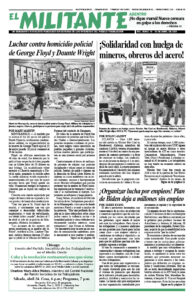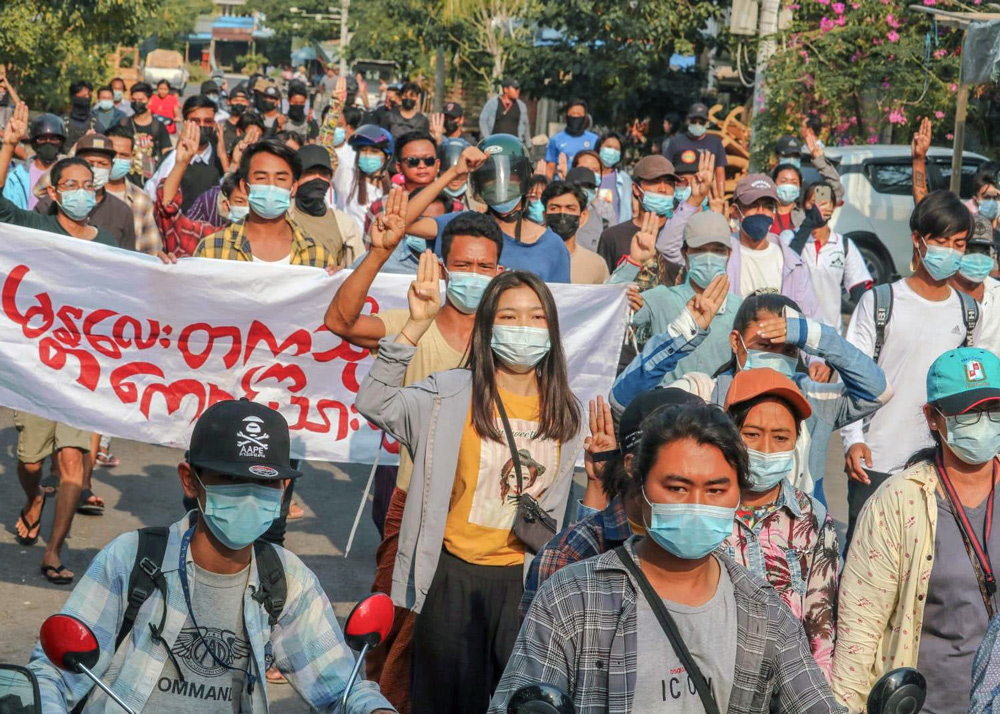In its deadliest massacre since seizing power Feb. 1, the military junta in Myanmar killed more than 80 people in the southwestern city of Bago April 10, bringing the total killed since their coup to more than 700.
In a sign of the generals’ inability to stop the protests and stabilize their dictatorial rule, the next day protesters marched once more in Bago carrying a banner that said, “Spring Revolution. On strike.”
The junta’s forces had launched their attack before dawn, firing rocket propelled grenades and machine guns at protesters manning a sandbagged barricade. They also raided at least five Bago neighborhoods where daily protests have taken place.
The crackdown, strikes and protests have shut down significant parts of the economy. Many Chinese-owned garment shops were hit with arson attacks by unknown forces who blame Beijing for the coup. Over 100,000 workers have fled Yangon back to their peasant villages or into exile.
The regime has shut down newspapers, radio and TV stations and frequently cuts off internet service. Now it’s confiscating satellite dishes to prevent people from viewing anything except junta-approved propaganda.
But the regime’s actions have backfired. “We have to follow the old-fashioned methods,” one activist told Myanmar Now. Student activists have started their own print journals with names like Towards, The Voice of Spring and Molotov.
The regime has another problem. It can’t shut everything down all the time if it hopes to keep commercial and financial relations going with the outside world. Every time it turns the internet back on, opponents of the regime use it to get out news of their struggle.
At the end of March, the military regime — apparently believing its own propaganda that the protests were dwindling — invited CNN and other big capitalist news media to visit.
Allegra Mendelson, a reporter for the Washington Post who was on the tour, wrote that the junta’s carefully orchestrated trip came apart when people at the 10-Mile Market in Yangon realized foreign reporters were there. Within seconds they started banging on pots and pans and holding their hands up in a three-finger salute, a symbol of defiance to the regime.
Despite the risk of being seen talking to reporters, a retired seaman approached Mendelson and said, “All Myanmar people don’t like the military coup. They want an elected government.”
He was referring to the deposed government of Aung San Suu Kyi and the National League for Democracy, the bourgeois party she leads, which won last year’s election in a landslide. The generals claim the vote was fraudulent.
On April 11 and 12 thousands protested across the country, including in the southeastern region of Tanintharyi, in the northern Jade mining area of Hpakant, in the eastern city of Loikaw and in the more central towns of Ye-U and Mogok.
The generals don’t trust the loyalty of many of the rank-and-file soldiers, made up mostly from farm families and workers from the Bamar ethnic majority. They’ve been forced to rely on notorious elite army units along with the police to attack protests.
The demonstrations are having an impact on the army, and a small number of soldiers have deserted, most recently Capt. Lin Htet Aung and several soldiers under his command. He told the press that most soldiers don’t support the repression but are too intimidated to stand up to the brass.
James Khyne in Houston contributed to this article.


